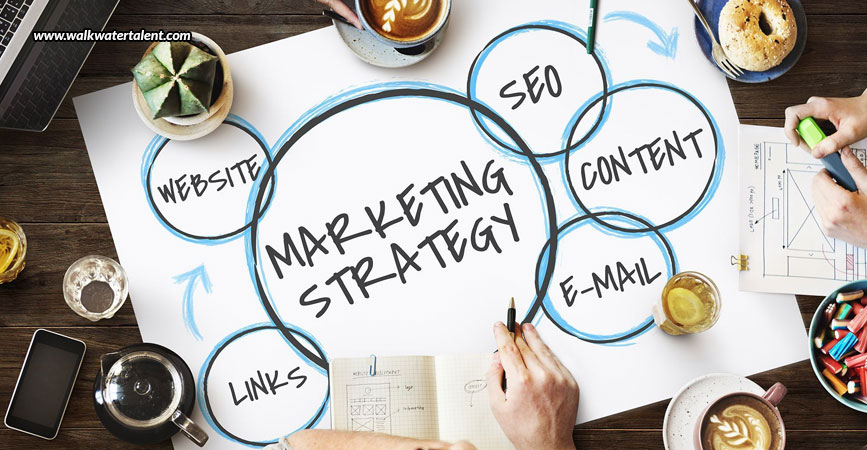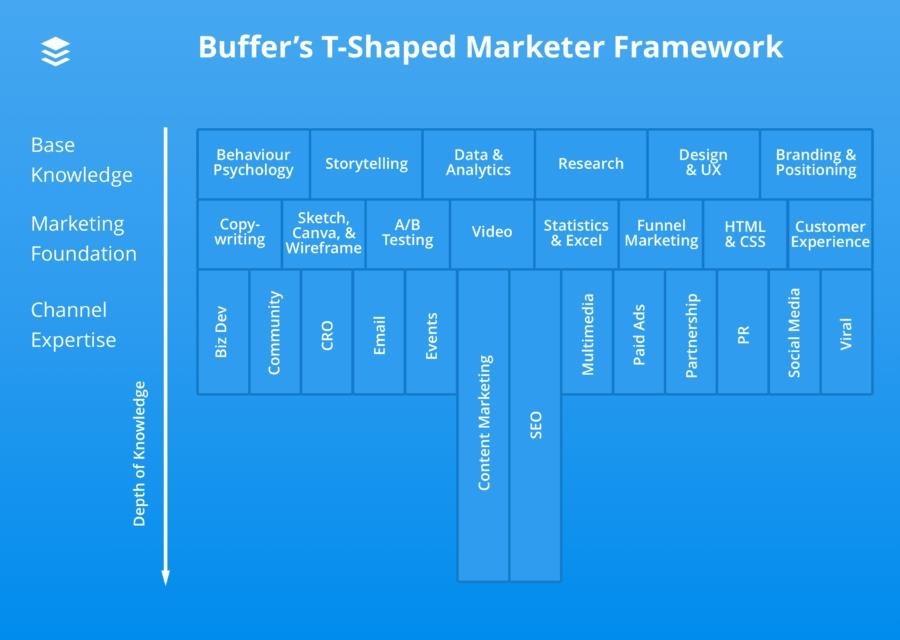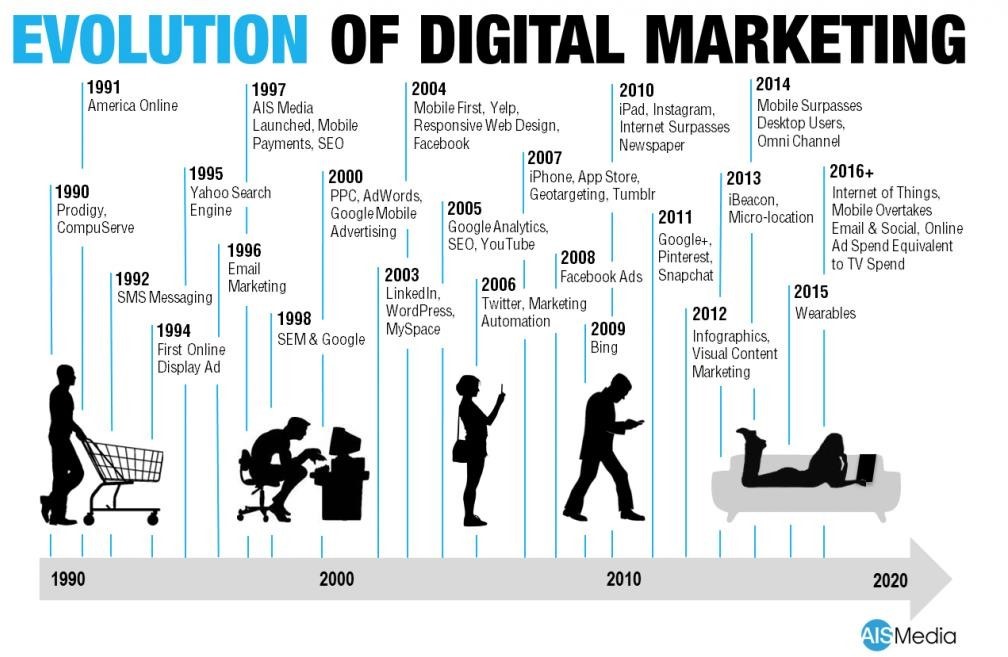
Growth Marketing Journey – > A Shift to Strategic Demand
Introduction
The marketing industry dates back to the industrial revolution when competition in the business world began. Since then, marketing strategies, although evolving with time and technology, still remained relatively common and conventional.
The term “growth marketing” was introduced in 2010, when Sean Ellis coined the term to describe the experimental growth approach companies like AirBnB and Amazon had, ultimately shifting the way we look at marketing and its strategies forever.
Growth marketing is the next evolution of the marketing industry. It takes the traditional marketing model, which has been around for decades, and enhances it with new and different, and sometimes uncommon, approaches that creates sustainable growth. These enhanced approaches include things like SEO and paid media, split A/B testing, email marketing, data driven content, and creative ad copy.
The Growth marketing function was born out of this high-pressure start-up environment. Start-ups often have minuscule marketing budgets and are dependent on growth for survival. Over the last decade, these pressures forced many companies to take more innovative approaches, often harnessing the power of technology to find new ways to grow without spending a massive budget on advertising. Growth Marketing movement (aka growth hacking)
Perspective Change -> Growth Marketing Brought In
As Damilola’s recent blog extracts while marketing is all about selling a company’s products and services, growth hacking is a more holistic function. Growth marketers are not just focused on sales, they are focused on business growth – no matter what that takes. It might include creative marketing, but it may just as easily extend to product development and user testing. Marketers try to sell a finished product. Growth hackers help design a product based on what customers ask for. Then there comes the technical skills.
A Growth Marketer is often a T-shaped marketer — with strong base knowledge, foundation, and depth.

What Makes Growth Marketing Different?
Userproof recent write up states that Traditional marketing involves “set it and forget it” strategies that burn through a set budget and hope for the best. Think Google Adwords and display campaigns with some basic ad copy. These strategies can be a great way to build traffic to the top of your sales funnel, aiding to increase a company’s awareness and user acquisition, but that’s where the value dwindles.
When done right, it adds value all the way through the marketing funnel by attracting users, engaging them, retaining them, and finally turning them into champions for your brand.
According to one HBR study, approximately 80% of marketers are dissatisfied with their ability to measure the ROI on their campaigns. This proves that there is often a gap between theory and practice, which is where growth marketers jump in.
In the recent write-up of Damilola Robert, there are also big differences in the skillsets of a Traditional marketer and a Growth hacker.
| Traditional Marketers | Growth Marketers |
| Mindset Change | |
| Traditional Marketers often spend big, but frequently lack the means or the tools to measure a given campaign’s ROI. | Growth Marketers are always on the lookout for small but powerful “hacks”: unconventional “tricks” or “shortcuts” with high potential and low costs. |
| Data | |
| They tend to base decisions on textbook theories and frameworks that have already been tested and somewhat proven but are not always applicable to all company sizes or goals. | Growth Marketers use a data-driven approach to everything they do. |
| Different Skillset | |
| They associate themselves more with artists. They are concerned with strategy, brand building, and sales. | Data scientist meets marketer meets programmer. The growth hacking skillset should include 3 essential elements: Creative marketing Data Analytics & Testing Software Engineering & Automation |
| Set Of Tools | |
| Their tools will mostly include more traditional communication methods; from print, to broadcast, PR. | Their tools largely revolve around measuring, testing, tweaking, and optimizing online processes and systems – and the tools they use reflect this. |
As pointed out by Adam Needles, growth marketing function, nearly ten years old, has had a significant and positive impact on the efficacy of demand marketing. Yet ‘first generation’ Growth Marketing has hit a wall. It is increasingly constrained by many of the attributes of the growth hacking mindset. In particular, it largely remains a ‘tactician-level’ activity that has not risen to the level of a holistic approach to sustainable business growth, nor is it largely embraced by senior executives, particularly at larger enterprises.
The Evolution from Growth Marketing to Strategic Demand
How can we tackle the challenges of modern Growth Marketing and help the discipline to evolve and mature? How do we transition to a Strategic Demand state?
There are four core shifts we must make in our Growth Marketing approach in order for the discipline to become more strategic:
- Operationalizing every element of go-to-market around buyer/customer journey — both pre-sale and post-sale:
The irony is that this concept is a cornerstone of Growth Marketing, but too many adherents spend all of their time optimizing small portions of the top and bottom of the funnel – skipping over much of what is involved in a buyer going from pain point to solution. Success – and a shift to Strategic Demand – requires expanding Growth Marketing beyond marketing.The ‘growth’ motion must be a complete orchestration of every sales and marketing interaction. Moreover, go-to-market requires that all elements — people, process, content, technology and data – be rationalized around buyer/customer journey – not just the content and campaigns.Of note, it is encouraging to see the Revenue Operations (RevOps) movement come to the forefront as a step in this direction of full orchestration of sales and marketing – especially at a people level – around a lead-to-revenue cycle.
- Orchestrating buyer/customer interactions multi-channel:
Too often Growth Marketers focus in on social and web channels. Optimization must engage every touchpoint, including areas such as field marketing and downstream sales interactions. Just ‘hacking’ some social posts and/or optimizing web UX is not enough. We’ve got to ‘hack’ the entire buyer/customer experience.
- Sustainability of growth efforts:
Growth Marketing was never intended to be a quick win, but too often ‘growth hackers’ are focused on the short term. If Growth Marketing is going to become a more strategic element of enterprise demand, it requires a focus on optimizing the sustainability of growth.
- Optimizing customer lifetime value:
Acquiring a customer via a Freemium offering and then ‘converting’ them to a paid customer is hardly optimizing customer lifetime value. Yet for some Growth Marketers such an ‘arc’ is fully compliant with a Growth Marketing mindset. Customer lifetime occurs over years, not weeks and months. And so, Growth Marketers must be closing the loop on longer-term data and optimizing sales and marketing interactions against long-term, profitable CLV.
Evolution of Digital & Growth Marketing – The Timeline

In the recent article by Avantika Monnappa Digital Marketing has evolved through across ages
The 90s
Archie, the first search engine, debuted in the early 1990s, heralding the birth of search. SEO, or Search Engine Optimization, quickly followed.
The first clickable web-ad banners were introduced in 1994. The first identifiable social media site was launched in 1997, with 3.5 million users. In the 1990s, a slew of websites still in use was found, including Google and Yahoo’s web search, both of which debuted in 1998.
The Millennial Generation
A massive economic bubble grew in the new millennium. However, the bubble’s peak and burst between 2000 and 2002 harmed many businesses. Many new sites were launched in the 2000s as the economy recovered from the boom, including the beginnings of LinkedIn in 2002, Myspace and WordPress in 2003, and Facebook in 2004. In the early 2000s, mobile text messaging marketing became increasingly popular.
The Mobile Era
The latter half of the decade saw increased marketing and sales, with Amazon’s e-commerce sales surpassing $10 billion. Over the next few years, mobile app culture expanded with the introduction of Whatsapp, Instagram, and Snapchat to the digital world.
The Present
Today, 65% of an individual’s digital media time is spent on a mobile device. The digital advertising industry is now valued at around $200 billion, with Google Ad Words accounting for 96% of the company’s revenue. With an estimated 3.1 billion online users, social networking has led the digital marketing revolution. The rise of bloggers and Instagram has resulted in a $1 billion industry for influencers, which are anticipated to grow. Digital marketing is expected to grow in the coming years, with many new developments and changes in this exciting industry.
Essential Growth Marketing Tools for companies and marketers looking to build bigger enterprises.
You may measure growth in revenue, customers, user numbers or a combination of KPIs but growth marketing is all about scaling towards bigger things. For many companies, growth marketing is purely aimed at maximising revenue and profit through customer growth but things aren’t always so straightforward.
Some companies prioritise growth above revenue and profit, working to maximise customer volume, user numbers and leads to attract investment and spend almost all of their income on driving further growth – a key characteristic of the tech start-up boom where companies constantly work towards securing the next investment drive.
Growth marketing involves experimentation and optimization across the marketing funnels. It involves a growth-focused approach that replaces traditional marketing with only what is testable, trackable, and scalable.
Ecommerce Marketing Tools:
- Salesforce Commerce Cloud
- OpenCart
- Shopify
- Magneto
- Shopify
- Woocommerce
Small Business Marketing Tools:
Industry Speak Vlogs
“AI-based marketing is set to utilise detailed information on the buying pattern of customers. It is crucial to predict user requests and increase sales. Consumers have already managed to get used to personification on the Internet, with platforms like YouTube, Netflix, Amazon developing robust algorithms for deep personalisation. This trend is only going to strengthen going forward,” says Amit Wadhwa, CEO, Dentsu Creative group India.
Prasanth Kumar, CEO, GroupM South Asia said, “The pandemic has pushed the envelope towards digital and has hence topped the pie, with advertisers keen to explore more of it. Ecommerce and Telco will drive the economy, we also expect FMCG and auto to slowly catch up and contribute towards this growth.”
Kartik Johari, Vice President – Marketing & Commerce, Nobel Hygiene said “We are drowning in a glut of content, be it 10 sec Reels, to full-blown documentaries. Consumers on the other hand are oscillating between anxiety, fright and boredom. The challenge is up to us, to create content that can engage, reassure, add value and be honest. It is so important to keep a track of how many people the content reaches, who engages, and what they say. We have never had so much data on our interactions and it is time we start using data better! It should be an interesting year for strong brand teams”
Ajit Varghese, Chief Commercial Office of ShareChat and Moj says
“The influencer/content creator community that we are seeing today is just the tip of the iceberg. This network is going to grow and get more diversified. The standard marketing/branding practices that we have seen in the last decade have paved the way for the larger change that is about to come. Micro/nano influencers who connect more deeply with consumers, going forward will be a part of each brand’s branding strategy. This is primarily because brands through these influencers’ strong relatability and relationships will be able to leverage a deeper connection with their audiences and reach out to them in their language of choice in a cost-effective manner”.
 Talent Acquisition view on hiring Marketeers for Digital Tech Companies across different ecosystem
Talent Acquisition view on hiring Marketeers for Digital Tech Companies across different ecosystem
In a Consumer Centric Environment, depending on the level of hiring and stage of the organisation the approach changes.
In a evolved set-up like a Series D or E / Pre IPO digital companies the Talent Acquisition will identify talent at a CMO level who preferably has risen from an FMCG background considering they are strong Brand Marketeers, have worked closely with Sales / Business teams to achieve profitability across brands and seen complete cycles of Growth and Performance.
New age companies like Series A,B or C at a Head of Marketing level (CMO might not be needed considering the stage of the organisation) will prefer talent having experience in a digital ecosystem having both online and offline marketing hands on experience. They will want a Growth Marketeers or a Digital Marketeer who is a strong Strategic thinker and can translate quantitative and qualitative data/insights into strong marketing strategies.
Skill Sets – Traditional Marketing V/s Growth Marketing
| Traditional Marketeers | Growth Marketeers |
Marketing Manager (Brand / Trade) within the FMCG space will be focussed on
For Example: A Brand Marketing professional associated with FMCG companies like HUL,RB, P&G having experience in Brand Building and Development, integrated Brand campaigning and Product Development. Having an MBA Degree from a Tier 1 / 2 colleges. | Growth Marketing Manager within the Digital / Online space will be focussed on
For Example: A Growth Marketing professional working with a Digital / Growth stage companies like Flipkart, Licious, Amazon having experience in driving Growth with acquisition and retention and revenue on app and web. Having prior knowledge of working on Growth Analytics tools and academically an MBA Degree from a Tier 1 / 2 colleges. |
| B2B | SAAS |
Marketing professional within the B2B space will be focussed on Category Marketing involving
For Example: A Marketing professional working with B2B companies like Udaan, Ninjacart, Meesho having experience in user engagement, retention, remarketing, retargeting campaigns, content strategy and data analysis. Having an MBA Degree from a Tier 1 / 2 colleges. | Marketing professional within the SAAS space will be focussed on Customer / Product Marketing involving
For Example A Marketing Professional working with SAAS companies like Freshworks, Zoho, Chargebee having experience in creative designing, lead generation campaigns via social media & advertising platforms (Facebook, Adwords, Linkedin, Affiliates etc) email marketing campaigns, website design & management, CRM marketing suite. Having a Bachelors Degree and post grade Marketing degree. |








